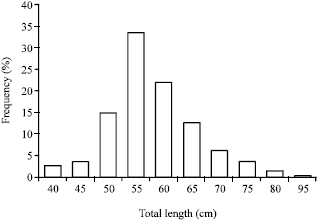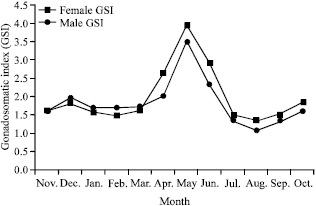Research Article
Length-Weight Relationship and Spawning Season of Sphyraena jello C., from Persian Gulf
Department of Fisheries, Faculty of Agriculture and Natural Resources, Persian Gulf University, Boushehr, Iran
P. Kochanian
Department of Fisheries, Faculty of Natural Resources, Khorramshahr University of Marine Science and Technology, P.O. Box 669, Khorramshahr, Khuzestan, Iran
J. Marammazi
Khuzestan Fisheries Research Institute, Khuzestan, Iran
V. Yavari
Department of Fisheries, Faculty of Natural Resources, Khorramshahr University of Marine Science and Technology, P.O. Box 669, Khorramshahr, Khuzestan, Iran
A. Savari
Department of Marine Biology, Faculty of Marine Science, Khorramshahr University of Marine Science and Technology, P.O. Box 669, Khorramshahr, Khuzestan, Iran
M.A. Salari-Aliabadi
Department of Marine Biology, Faculty of Marine Science, Khorramshahr University of Marine Science and Technology, P.O. Box 669, Khorramshahr, Khuzestan, Iran












